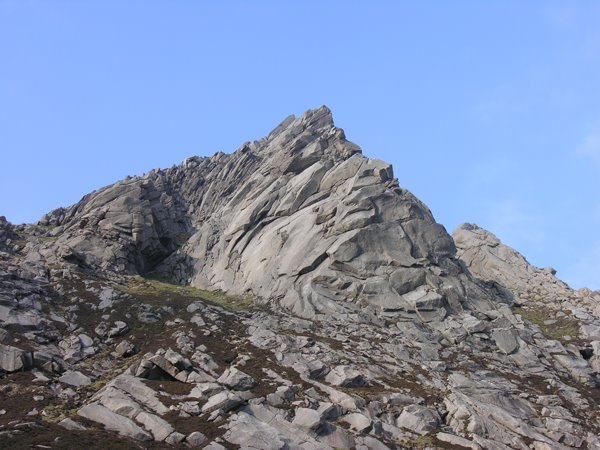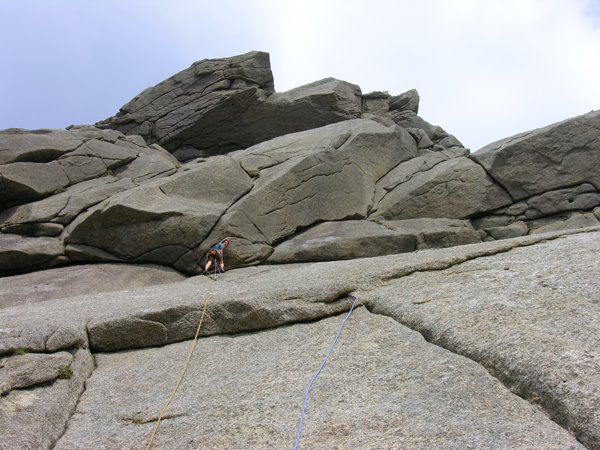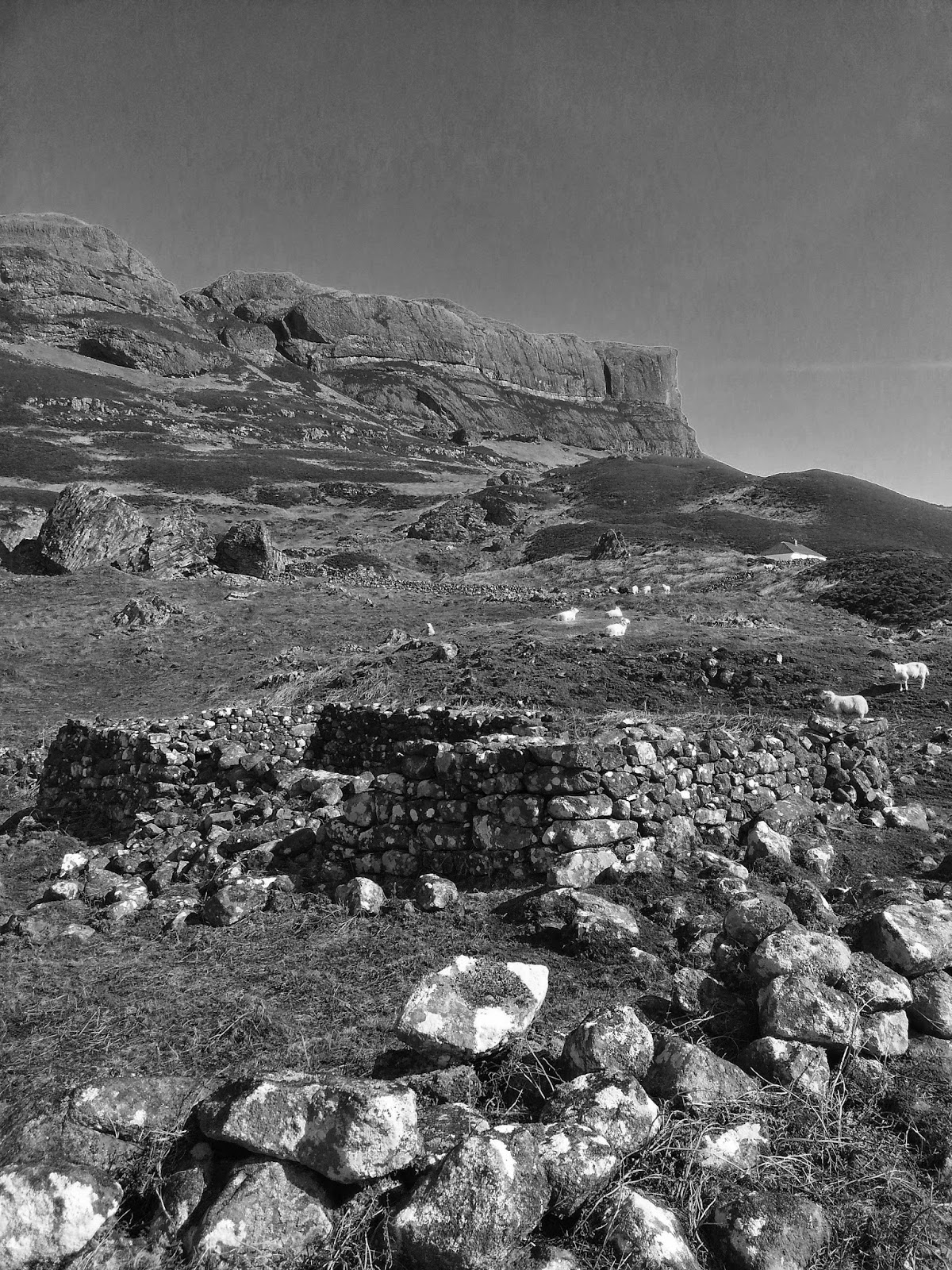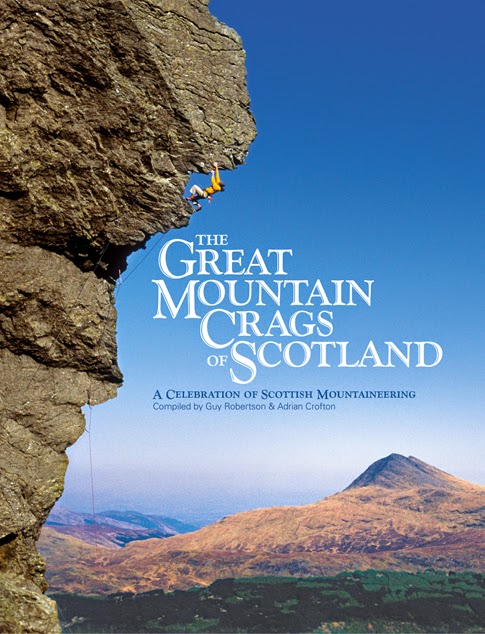Mountain Weather
Well, what happened to spring? It just seems to have jumped straight into high summer, but the ones we remember from long ago: mild winds, hazy sun, crisped grass and no rain... how long will it last, and without midges to boot? Maybe this will be the trad summer we have been waiting for!
I took a day off working on the new Font guide to head over to Arran, the large boilder plate slabs of granite gleaming like broken mirrors. The streams bubbled in full jacuzzi mode and confused buzzards circled high on the unseasonable thermals. Expecting a rash of parties on Cir Mhor, we were surprised to note only one other party on South Ridge. We meandered up West Flank Route, enjoying the sunny belays and cooling updrafts of air, listening to the endless cawing of ravens. Looking down over the vast U-bowl of Glen Rosa, the boulder fields caught my attention and it was tempting to go and look at a few unclimbed (but probably holdless) roofs after the route, but it's too warm for bouldering now and the body yearns for long sequences of dry rock in fine situations, which Arran provides.
After a lazy start on the second ferry over, the walk-in and climbing had eaten the hours and it was 5pm already, so we stomped back down, foodless, as the ravens had stolen all my baby-bels and a stack of four pancakes from my rucsac. The new path makes for a quick descent and we had time for the obligatory and welcome pint in Brodick.
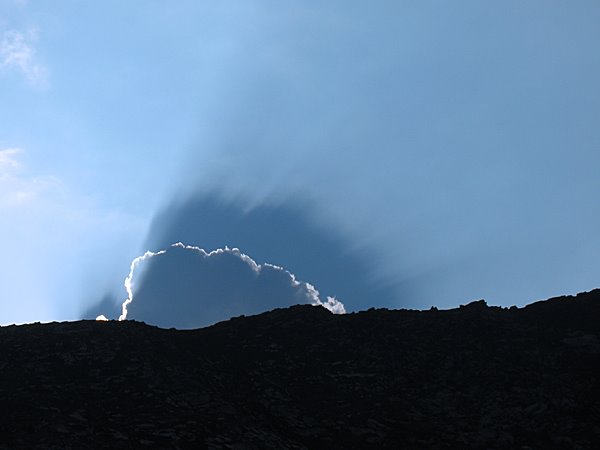
Clouds over Glen Rosa
